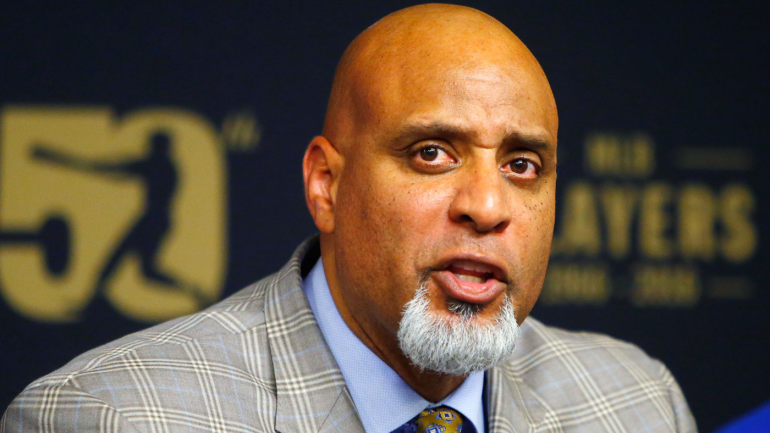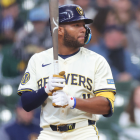
Dec. 1 draws ever nearer, and that date has major significance for Major League Baseball this offseason. That's the date on which the current collective bargaining agreement (CBA), which is the negotiated accord that governs almost every aspect of the working relationship between players and team owners, expires.
While negotiations on a new agreement are ongoing in intense fashion, the widely held expectation is that there's not enough time to forge a new CBA before the current expires. Likewise, the widely held expectation is that owners on Dec. 1 or Dec. 2 will lock out the players until a new CBA is agreed upon. That lockout, if it drags on long enough, would imperil the 2022 season or least the normal unfurling of it.
We've already undertaken some wide-angle views of the process of negotiating this new CBA, and now let's home in on the players' side of things. In particular: What does the union hope to accomplish during these talks? In broad terms, both sides are fighting over how the league's revenues will be divided up. The players want to address their dwindling share, and owners want to thwart those efforts.

CBS Sports HQ Newsletter
Your Ultimate Guide to Every Day in Sports
We bring sports news that matters to your inbox, to help you stay informed and get a winning edge.
Thanks for signing up!
Keep an eye on your inbox.
Sorry!
There was an error processing your subscription.
For a closer look, let's get into some specifics from the players' side and what they're likely fighting for in these negotiations.
A reinvigorated free agency
We've seen some highly tepid and slow-developing free agent markets in recent years, and all but those at the top end of the market have often found suitors hard to come by. There are a number of reasons for that. Probably chief among those is that teams are increasingly leaning on cost- and team-controlled players -- i.e., those yet to be eligible for salary arbitration or free agency. By extension, that's hurt the free agent market, as evidenced by the fact that the average salary has declined modestly in recent years even as inflation has otherwise tracked upward.
So what to do about that? The only way to attack this problem from the standpoint of the Players Association is to lower the threshold for free agency. At present, players with six full years of major-league service time are eligible for free agency. Owners have in a prior proposal leaked to the press floated the idea of age-based free agency, but the particulars of their offer -- free agency at age 29 1/2 -- won't do anything to breathe life back into the market. A more likely tack for the players is to press to lower that threshold to five years of service time.
Another possibility is defining downward what constitutes a year of MLB service time. Right now, a player must be on the active roster or injured list for 172 days during the regular season in order to get credit for a full year of service time toward things like arbitration and free agent eligibility. The regular season at present spans 187 days, which means teams need only delay the call-up of a coveted prospect by two weeks and change in order to delay his eventual free agency (and arbitration) by a full year. This is called service-time manipulation, and it's also a target of the union's in these negotiations. Reducing the number of days it takes to earn a year of service time would increase the disincentives for keeping fully ready prospects down on the farm for purposes of stealing another year of control from them.
A shorter timeline for getting young players paid
Related to the aforementioned and established phenomenon of teams depending on players who have yet to hit their high-salary years, the union no doubt wants to address this inequity. Younger players in terms of on-field value are, as a group, better than older players, but the antiquated salary structure, which is driven by tenure rather than capability, doesn't reflect that. Right now, almost all players are entitled to no more than the major-league minimum until they have three years of MLB service time, at which point they become eligible for arbitration. To put a damning point on it, AL MVP finalist Vladimir Guerrero Jr. made just $605,400 this season (compared to the current minimum salary of $570,500), which means he was underpaid relative to his production by tens of millions of dollars.
For the union, this can be addressed in multiple ways. The clearest path would be to fight for a significant increase to the minimum salary. Right now, the MLB minimum trails those of the NFL, NBA, and NHL, and that's not a trend the Players Association should permit to continue. In an ideal world, the union would put a large chunk of its negotiation capital into doubling the minimum, or thereabouts. Not only would such a jump in the minimum raise the de facto salary floor by a significant margin but it would also provide the underclass players who never make it to arbitration and free agency with much more financial security. That's especially important as the average career length in MLB trends downward.
In lieu of a major increase to the minimum (or in addition to), the players could angle to lower the bar for arbitration eligibility back to two years (where it was during the early existence of the process), and they've already pitched setting aside a pool of revenues to distribute to pre-arb players. Either would advance the laudable goal of getting players new to the majors paid more.
Tanking disincentives
For the past several years, any number of teams have strip-mined their rosters and in essence put out on-field products that are major league in name only. They do it in the name of acquiring future "assets" in trade and to improve draft position, which theoretically improves the team's long-term outlook. Needless to say, this is anathema to the union's goals, and the players would like team owners to be at least half as competitive as they themselves are.
An obvious initial step is to alter the way draft order is determined so that teams are not in essence rewarded for being terrible. The lottery approach is one way to do this, but that hasn't exactly snuffed out tanking in the NBA. Requiring some kind of baseline "respectability" in the standings in order to secure a high pick is another possibility.
Really, though, the hoarding of draft picks isn't the primary reason teams don't field competitive rosters. Thanks to revenue sharing, local and national television deals, real estate ventures surrounding their (probably publicly funded) ballparks, and now gambling revenues, teams are basically guaranteed profitability independent of gameday revenues like parking fees and ticket and concession sales. All that in the absence of any competitive pride, and you get teams that don't make a good-faith effort at fielding a competitive squad. The players will certainly press for their share of gambling monies in these negotiations, and you could see the union make a more general argument that those accompanying revenue streams that owners see as independent would never exist without the baseball games the players play. They would of course have a good point about that. Carving out a share of those revenues for the players would in turn leave owners with a bit less of a comfy bed on which to lie down and do not much of anything.
Making owners more competitive with each other and more willing to invest in player payroll means more than changing the way draft picks are distributed. It mostly means restoring some small level of risk to the endeavor of owning a baseball team. The billionaire's sense of entitlement, however, is always a formidable hurdle.






















